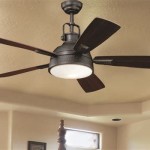Ceiling Fan Oil: What You Need to Know
Ceiling fans, ubiquitous in homes and businesses, provide a comfortable and energy-efficient way to regulate temperature and circulate air. However, as with any mechanical device, proper maintenance is crucial to ensure optimal performance and longevity. One essential aspect of ceiling fan maintenance is lubrication, which is achieved through the use of ceiling fan oil. This article will delve into the intricacies of ceiling fan oil, exploring its purpose, types, application, and the importance of regular lubrication.
The Role of Ceiling Fan Oil
Ceiling fans contain moving parts, such as bearings and motor shafts, that experience friction during operation. This friction generates heat, which can lead to wear and tear, ultimately affecting the fan's efficiency and lifespan. Ceiling fan oil acts as a lubricant, reducing friction between these moving parts. By minimizing friction, ceiling fan oil helps to:
- Reduce noise: A well-lubricated fan runs smoothly and quietly, without the annoying whirring or grinding sounds often associated with worn-out bearings.
- Improve efficiency: Reduced friction translates to less energy expenditure, potentially leading to lower utility bills.
- Extend lifespan: By minimizing wear and tear, lubrication helps to prolong the fan's operational life.
- Prevent breakdowns: Regular lubrication can help prevent premature failure of vital components, minimizing costly repairs or replacements.
Types of Ceiling Fan Oil
While the primary function of all ceiling fan oils is the same - to lubricate moving parts - different types of oil are suited for specific applications and environments. Understanding these differences is crucial for selecting the appropriate oil for your fan.
- Motor Oil: This oil is specifically designed for internal combustion engines and is not recommended for ceiling fans. Its viscosity and additives may be incompatible with the delicate mechanisms of a fan, potentially causing clogging or damage.
- Silicone Oil: Silicone-based oils are a popular choice for ceiling fans due to their excellent lubricating properties, resistance to high temperatures, and ability to repel dust and moisture. They are readily available and relatively affordable.
- Synthetic Oil: These oils are formulated using advanced chemical processes, resulting in superior performance and longevity compared to conventional oils. Synthetic oils are more resistant to breakdown under extreme temperatures and offer excellent protection against wear and tear. However, they can be more expensive than other types.
- White Lithium Grease: While not strictly an oil, white lithium grease is an acceptable lubricant for ceiling fans. It provides excellent protection against wear and tear and is resistant to moisture and heat. However, its thicker consistency can attract dust and debris, requiring more frequent cleaning.
When choosing a ceiling fan oil, it's important to consult the manufacturer's instructions or a qualified electrician. They can provide specific recommendations for the type of oil best suited for your fan model and operating environment.
Applying Ceiling Fan Oil
The process of applying ceiling fan oil is relatively straightforward, but it requires careful execution to avoid damage to the fan or injury to the user. Here are some essential steps:
- Turn Off Power: Always disconnect the power supply to the fan before attempting any maintenance. Failure to do so can result in electric shock or serious injury.
- Locate the Motor Housing: The motor housing is usually located at the top of the fan, where the blades connect to the motor shaft.
- Access the Lubrication Points: Most ceiling fans have designated lubrication points, typically marked with small holes or openings in the motor housing. Remove any dust or debris from these points before applying oil.
- Apply Oil Sparingly: Use a small amount of oil, just enough to lubricate the bearings and motor shaft. Excess oil can attract dust and dirt, compromising the lubrication and potentially causing damage.
- Wipe Excess Oil: After applying oil, wipe away any excess with a clean cloth. This prevents oil from dripping onto the blades or surrounding surfaces.
- Turn On Power: Once the excess oil is removed, turn on the power and allow the fan to run for a few minutes to distribute the oil.
- Repeat Regularly: The frequency of lubrication depends on the type of oil used, the fan's operating conditions, and the manufacturer's recommendations. However, a general guideline is to lubricate the fan every 6-12 months.
Remember, proper lubrication is essential for maintaining the performance and longevity of your ceiling fan. By understanding the different types of oil and practicing safe application techniques, you can ensure your fan operates smoothly and efficiently for years to come.

How To Oil A Ceiling Fan With Pictures Wikihow

How To Oil A Ceiling Fan With Pictures Wikihow

How To Oil A Ceiling Fan With Pictures Wikihow

How To Oil A Ceiling Fan With Pictures Wikihow

Hunter Italian Countryside 52 In Ceiling Fan With Led Light Kit And Pull Chain Cocoa P C Richard Son

Ceiling Fan Wikipedia

Spal 30101522 Puller Fan 12 Medium Profile For Use W 25amp Best Offer

T Offers On Spal 30101522 Puller Fan 12 Medium Profile

Antique Vintage Original Old Marelli Ceiling Fan Italy 3 Blade Wings Propeller

Rubine Vento Series Rcf 5b Matte Black Oil Brown 42inch 53inch Decorative Ceiling Fan Power Tools Sprayer Pump Kuala Lumpur Kl Malaysia Selangor Sentul Construction Materials Industrial Supplies Cheng Huat
Related Posts








